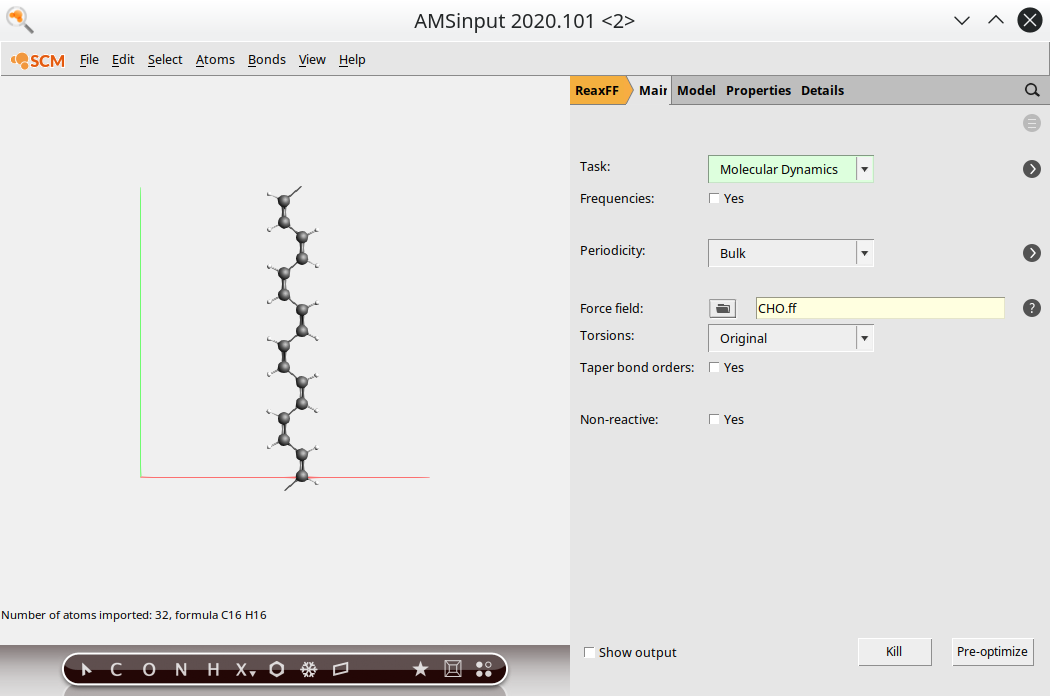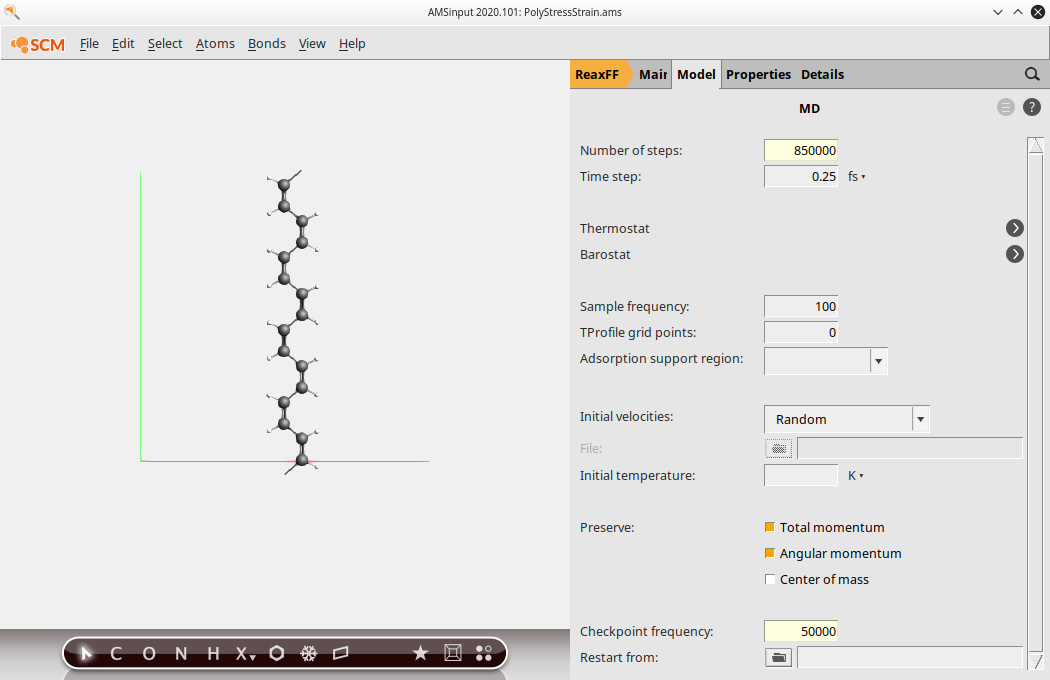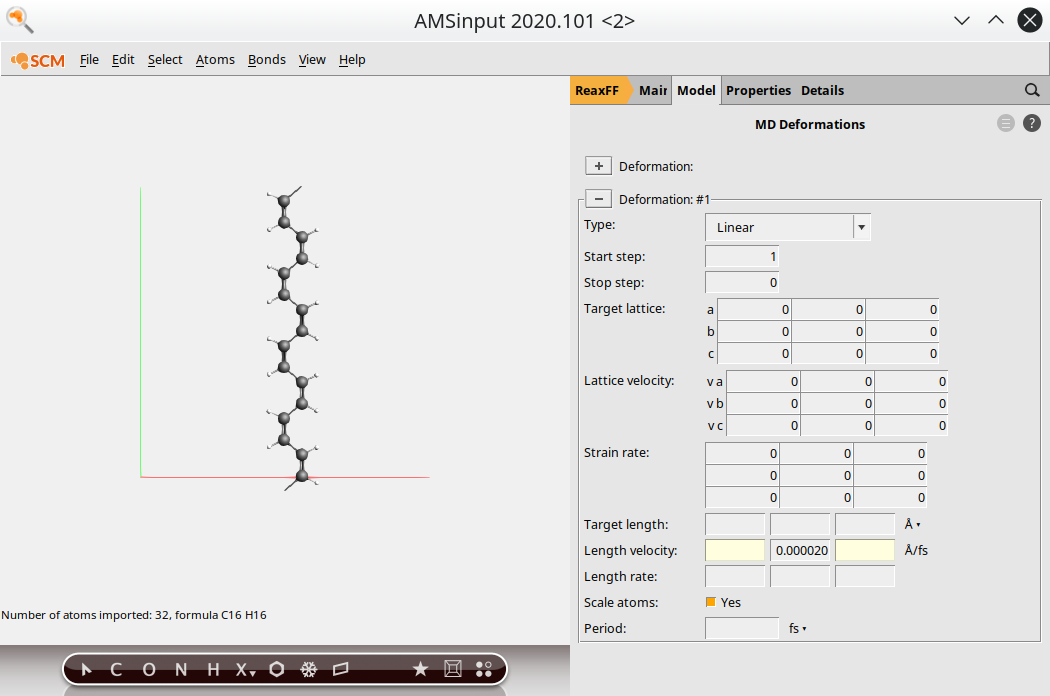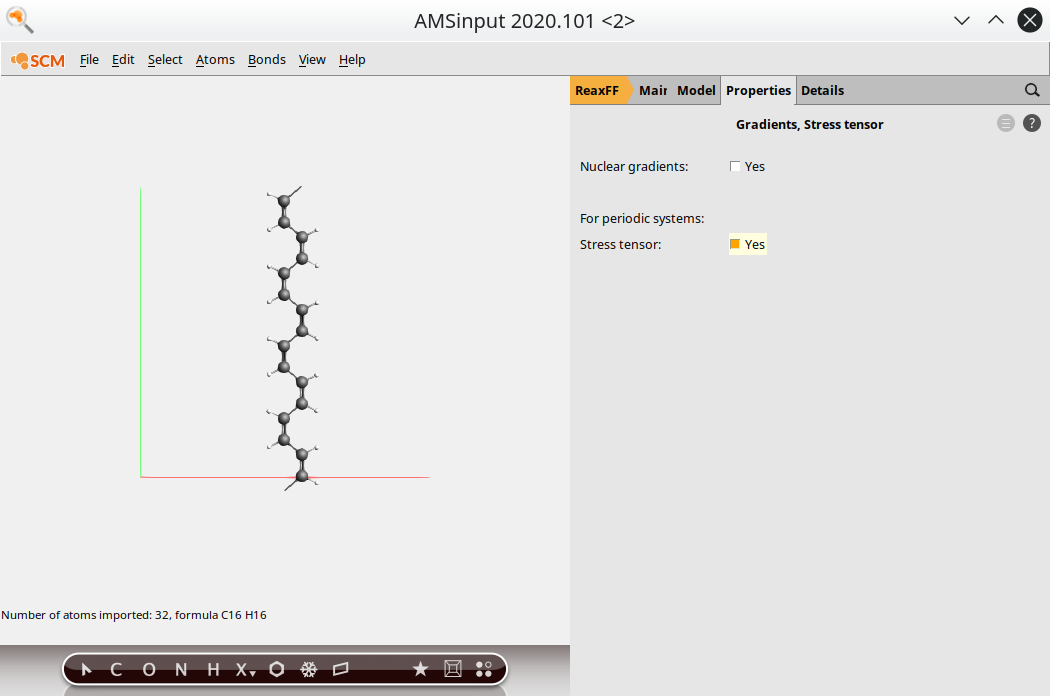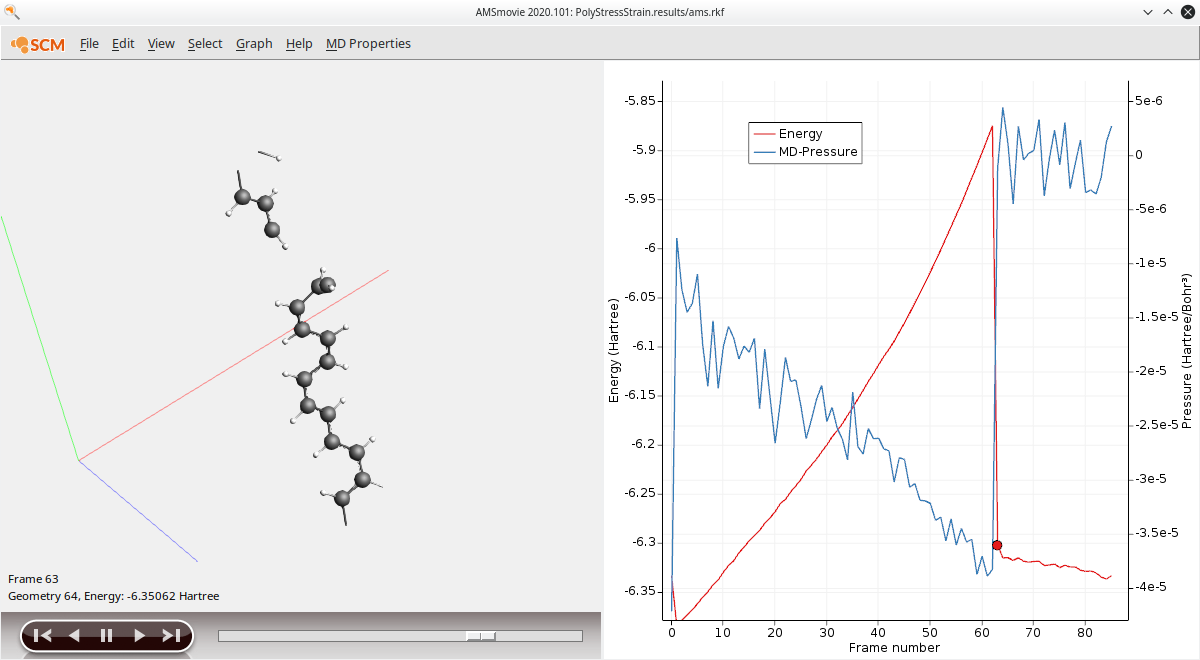Snapping Polyacetylene Chain¶
This tutorial demonstrates how to set up a molecular dynamics calculation with an increasingly more stretched unit cell in order to study the mechanical properties of a small polymer chain model. During the simulation, the strain on the chain is increased slowly until the initial double bonds of the cis-Polyacetylene are successively converted into their trans configurations. Afterwards, an even larger strain causes the polymer chain to snap which immediately reduces the stress to zero. The stress tensor components computed during the MD simulation are then collected with a small Python script and plotted to demonstrate different changes in the molecular structure of chain.
Step 1: Start the GUI¶
We will set up an MD simulation from the GUI. Alternatively, you can download this PolyStressStrain.run.
Step 2: Import Structure and Settings¶
We begin by setting the main calculation options for the molecular dynamics simulation.
- In the menu bar, File → Import Coordinates…Select
cis_polyacetylene.xyzIn the main panel, select Force Field: → CHO.ff
Next, set the options for molecular dynamics:
The simulation should run at constant temperature, so we add a thermostat:
Next, we have to set up the deformation so that the chain is stretched during the simulation.
- Select Model → MD Deformations, and add a deformationSet the second field in Length velocity
0.000020A/fs.
Lastly, we need to calculate the stress tensor
- Properties → Gradients, Stress Tensor Check stress tensor.
Step 3: Run the Calculation¶
After having set all calculation options we are now ready to start the run
Step 4: Evaluate the Results¶
Once the calculation has finished, the stress-strain curves can be extracted from the binary results file with the help of a Python script using the PLAMS library.
The script called stress_strain_curve.py can be run from the command line:
$AMSBIN/amspython stress_strain_curve.py PolyStressStrain
Be sure to match the job name correctly.
The stress-strain curve is written to a file called stress-strain-curve.csv:
# strain_x, strain_y, strain_z, stress_xx, stress_yy, stress_zz
0.0000 0.0000 0.0000 -0.000002123540 0.000041449314 -0.000000198040
0.0000 0.0026 0.0000 0.000001083810 0.000039450993 0.000000882455
0.0000 0.0053 0.0000 -0.000006368834 0.000040380759 0.000000145990
0.0000 0.0079 0.0000 0.000000862343 0.000039169395 0.000001048778
0.0000 0.0105 0.0000 0.000000339014 0.000050208909 -0.000000796209
0.0000 0.0132 0.0000 0.000000671946 0.000050569092 0.000001392349
0.0000 0.0158 0.0000 0.000009834386 0.000061383368 0.000003143092
0.0000 0.0184 0.0000 0.000000607648 0.000053138974 0.000005960118
0.0000 0.0211 0.0000 -0.000005062346 0.000046333020 0.000000554734
The resulting stress/strain curve can then be plotted as stress_yy (column 5) against strain_y (column 2) with any plotting software, e.g. matplotlib:
You can download an example script plot_stress.py, which can be run with amspython to generate an image called stress-curve.png.
Note the different segments in the stress/strain plot. The first of these segments starts correspond to the polymer chain having increasingly more double bonds in trans configuration. After the last double bond has been converted the resulting trans-Polyacetylene chain exhibits different mechanical properties which results in a different slope of the stress/strain graph. At a certain strain, the chain snaps, immediately reducing the stress to zero as beyond this point the periodic polymer chain has turned into a molecular entity.



